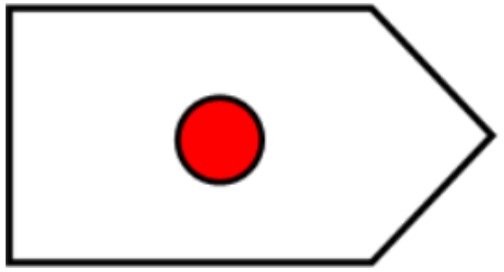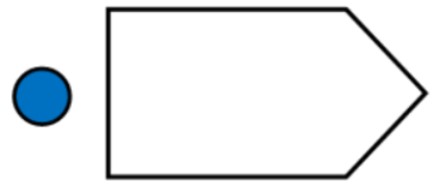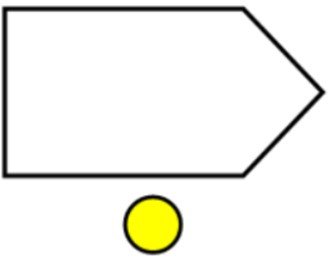Are you in a leadership role? If so, how confident are you in your understanding of what being a leader truly entails?
When we think of leadership, the immediate association is often with someone guiding their team towards greater success. While this is accurate, cultivating a leadership mindset goes beyond merely overseeing a team. It involves embracing differences and recognizing that a deeper understanding and a willingness to grow are essential in developing the qualities of an effective leader.
Let’s face the truth. Leadership isn’t just what you initially perceive it to be; it’s often more complex than that. In this blog, we’ll explore what it means to have a healthy perspective on leadership and why it’s vital to develop a deeper understanding and a growth mindset to refine your leadership skills. Let’s embark on this journey together.
What True Leadership Means
Many leadership books focus on just one or two angles, penned by authors who champion specific aspects of leadership. While not inherently wrong, this approach might leave readers with a skewed or incomplete understanding of leadership.
Imagine picking up a leadership book written by an author with a Direct personality style – you could practically title it “How to Lead Like a D according to a D.” Oddly enough, D-style readers gravitate toward books that echo their leadership style. But when this happens, crucial aspects of our leadership style that might hinder us could be overlooked or barely touched upon if we only open ourselves to such literature.
That’s why cultivating a true operative’s view of leadership involves acknowledging that you don’t know everything about the subject. This mindset fosters openness, allowing you to absorb fresh ideas and insights.
Another healthy way to view leadership is by recognizing that everyone, including yourself, is a leader in their own way. It doesn’t mean everyone leads the same way, but to be open to learning, it’s essential to recognize that you have your own way of influencing those around you, whether you realize it or not.
Why Knowing Different Leadership Personality Styles Matters

The reality is that no sincere leader intentionally alienates or miscommunicates with those they lead. But, eventually, all leaders will fall short in meeting the needs and expectations of the people they lead to some extent if they do not understand the differences between each personality’s leadership style.
So, for the mission to be a success, it’s important to become aware of your leadership style and the needs and motivations of those you lead. It is also important and helpful for a leader to learn to understand and adapt to other different leadership styles to help the entire team be the most productive when working together.
The key is to remember that each person’s view of leadership is naturally influenced by their own experiences but more so by their personality style.
Understanding the 4 Leadership Positions
Since our personality influences everything we do – especially how we lead – it’s essential to view leadership through different lenses by understanding the four core personality traits of DISC.
For instance, leaders who are more outgoing than reserved will approach their roles differently. Similarly, whether a leader is people-oriented or task-oriented will determine which aspects of a situation they prioritize first.
Every leader has a preferred approach, known as their Leadership Position. To help you understand this concept further, let’s break it down according to each personality style.
The Directive (D) Style Leader: Moving Forward Out in Front
A person with high “D” traits is both OUTGOING and TASK-ORIENTED. They strongly desire to achieve quick results, often initiating action immediately. Picture the “D” leader as being OUT IN FRONT, taking charge and leading the way, as shown in the diagram below:

The main motivation of a Directive Leader is to make progress and accomplish goals. Leading from “out in front” doesn’t mean they want to be the center of attention. Instead, it means they proactively initiate action and direct others to follow suit.
Expect a Directive Leader to exhibit these “D” traits:
- Dominant
- Direct
- Demanding
- Decisive
- Determined
- and a Doer
The Inspirational (I) Style Leader: Actively Involved in the Middle
On the other hand, a person with high “I” traits is OUTGOING and PEOPLE-ORIENTED. This type of leader thrives on engaging with others and seeking excitement. They’re often always ready to initiate interaction and involvement. Imagine the “I” leader right in the middle of the action, surrounded by their team, as explained by the diagram below:

The primary motivation of Inspirational Leaders is to generate enthusiasm and positivity within their environment. They are energized by excitement and seek approval from those they lead. Their influence lies in rallying others to join a project, spreading their contagious optimism. Often seen as “natural salespeople,” Inspirational Leaders have a knack for persuading others and are typically the most sociable team members.
You can expect an Inspirational Leader to exhibit these “I” traits:
- Inspiring
- Influencing
- Impressionable
- Interactive
- Impressive
- Involved
The Supportive (S) Style Leader: Supporting from Behind
A person with high “S” traits is RESERVED and PEOPLE-ORIENTED. They have a strong desire to help others and often align with the group’s goals. Leaders with an “S” style are always ready to support when called upon. Picture their leadership position as being behind everyone and offering steady support.

Their main motivation is to foster goodwill and peace within their team. They are driven by loyalty and a desire to maintain harmony. S leaders also prefer an unassuming approach, choosing to comfortably serve others quietly and away from the spotlight. Supportive Leaders are often “the glue” that holds an organization together, as they offer the most genuine warmth and care.
That being said, you can expect a Supportive Leader to have these “S” traits:
- Supportive
- Stable
- Steady
- Sweet
- Status-quo
- Shy
The Cautious (C) Style Leader: Carefully Guiding from the Side
Finally, there are the “C” type of people who are RESERVED and TASK-ORIENTED. These leaders have a strong desire to do things correctly, choosing to proceed carefully and methodically to ensure everything is done right. Visualize the Leadership Position of a “C” leader as being on the side, observing and analyzing everything.

Their primary motivation is to execute tasks accurately. Driven by logic and a methodical approach, they also prefer to approach situations step-by-step. Cautious Leaders are often seen as “strategic operatives,” as they lead according to a well-calculated plan.
You can expect a Cautious Leader to exhibit these “C” traits:
- Cautious
- Calculating
- Competent
- Conscientious
- Contemplative
- Careful
True Leaders Embrace Differences
Just as spies rely on their unique skill set to navigate complex missions, our personalities shape the type or style of leader we naturally become. Instead of operating in isolation, true leaders gather intelligence from various sources, considering perspectives beyond our own. By doing so, we harness the strengths of our operative style while also deciphering the nuances of our team members’ approaches.
This strategic approach is what ultimately fosters open communication channels, like encrypted messages exchanged between spies in the field. Leaders and team members learn to engage in dialogue, decrypting the variations in leadership styles and adapting strategies accordingly. And this is how we collaborate like a well-coordinated spy team, pooling resources and expertise to enhance our operational efficiency and ensure mission success.
If you want to learn how I, as a former military operative, integrated the DISC concept into my leadership style while in uniform, check out my recent podcast interview here.
Note: The DISC leadership style idea and concept came from DHC Training Solutions and was inspired by Personality Insights Inc.

